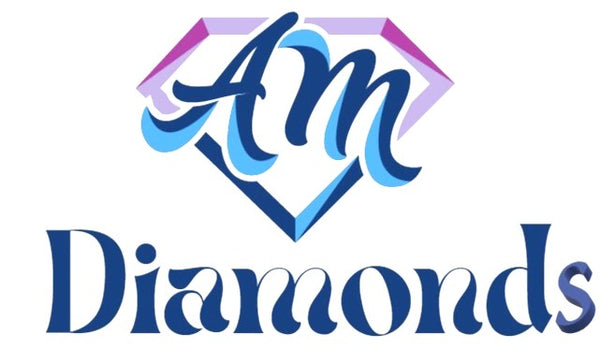Education
Gold and diamonds are two of the most popular materials used in jewelry. Here's some education on gold and diamonds in jewelry:
Gold:
-
Gold is a precious metal that is valued for its rarity, beauty, and durability. It has been used in jewelry for thousands of years.
-
Gold is measured in karats (not to be confused with carats, which is a unit of weight for diamonds). The higher the karat, the more pure the gold. 24-karat gold is considered pure gold, but it is too soft for use in jewelry. 18-karat gold is a popular choice for jewelry because it is durable and has a high gold content.
-
Gold can be alloyed with other metals to create different colors. For example, yellow gold is alloyed with copper and silver, while white gold is alloyed with nickel or palladium.
-
Gold jewelry should be cleaned regularly to maintain its shine and luster. Mild soap and water, or a jewelry cleaning solution, can be used to clean gold jewelry.
Diamonds:
-
Diamonds are a precious stone that is valued for its rarity, beauty, and hardness. They are formed deep within the Earth's mantle over billions of years.
-
Diamonds are measured in carats, which is a unit of weight. One carat is equal to 0.2 grams.
-
Diamonds are graded based on the 4Cs: color, clarity, cut, and carat weight. The color of a diamond ranges from D (colorless) to Z (yellow). The clarity of a diamond ranges from Flawless (no inclusions or blemishes) to Included (visible inclusions). The cut of a diamond refers to the proportions and angles of the diamond, which affect its brilliance and sparkle.
-
Diamonds can be set in a variety of metals, including gold, platinum, and silver. They are often used in engagement rings, wedding bands, and other types of jewelry.
-
Diamonds should be cleaned regularly to maintain their sparkle and brilliance. A mixture of mild soap and warm water can be used to clean diamonds. They can also be cleaned with a jewelry cleaning solution and a soft brush.
-
Conflict-free diamonds, also known as ethical diamonds, are diamonds that are sourced without any human rights abuses or environmental damage. Ethical diamond certification programs, such as the Kimberley Process Certification Scheme, ensure that diamonds are sourced in a responsible and sustainable way.
The 4 C's of Diamonds
The 4 C's of diamonds refer to the criteria used to determine the quality and value of a diamond. These are:
-
Carat weight: Carat weight refers to the weight of the diamond and is measured in carats. One carat is equal to 0.2 grams, and diamonds are typically sold in weights ranging from 0.25 carats to several carats. The higher the carat weight, the more valuable the diamond.
-
Color: The color of a diamond is graded on a scale from D to Z, with D being the most colorless and valuable, and Z being the most yellow or brown. The less color a diamond has, the higher its value.
-
Clarity: Clarity refers to the presence or absence of inclusions and blemishes in a diamond. Inclusions are internal imperfections, while blemishes are external imperfections. Clarity is graded on a scale from Flawless (FL) to Included (I), with Flawless being the most valuable and Included being the least valuable.
-
Cut: The cut of a diamond refers to its proportions, symmetry, and polish. A well-cut diamond will reflect light in a way that maximizes its brilliance, fire, and scintillation. The cut is graded on a scale from Excellent to Poor, with Excellent being the most valuable.
Together, the 4 C's help determine the value and beauty of a diamond, and understanding each of these criteria can help you make an informed decision when purchasing a diamond.
How to buy Engagement Rings
Buying a gold and diamond engagement ring can be a significant investment, both financially and emotionally. Here are some steps to follow when buying a gold and diamond engagement ring:
-
Set a budget: Determine how much you are willing to spend on the engagement ring. This will help you narrow down your options and avoid overspending.
-
Research: Research different styles of engagement rings and educate yourself about the 4Cs of diamonds (color, clarity, cut, and carat weight) to help you make an informed decision.
-
Choose the right jeweler: Find a reputable jeweler with a good track record and positive reviews. Ask for recommendations from friends and family or look for jewelers with certifications such as the Gemological Institute of America (GIA).
-
Select the right diamond: Choose a diamond that fits your budget and desired specifications. Consider the 4Cs of diamonds, and ask to see the diamond certificate to verify its authenticity.
-
Choose the right metal: Decide on the type of metal you want for the engagement ring band, such as yellow gold, white gold, rose gold, or platinum.
-
Decide on the style: Choose the engagement ring style that best fits your partner's preferences and personality. Some popular styles include solitaire, halo, vintage, and three-stone rings.
-
Get the right size: Make sure you know your partner's ring size to ensure a proper fit. You can discreetly measure their ring finger or borrow a ring to have it sized.
-
Insure the ring: Once you have purchased the engagement ring, consider insuring it to protect your investment.
Remember, an engagement ring is a symbol of love and commitment. Take your time, do your research, and choose a ring that you and your partner will cherish for years to come.
